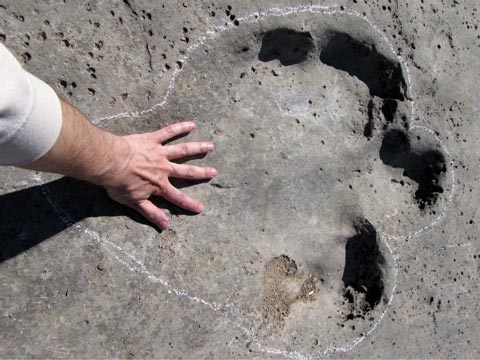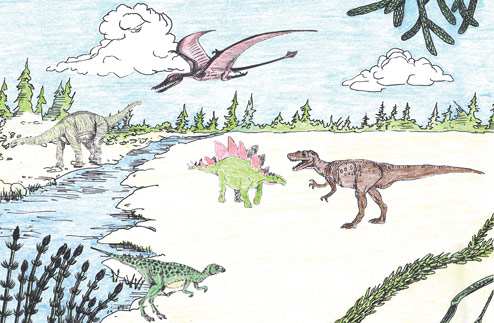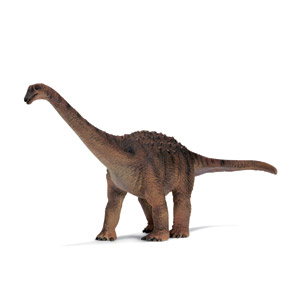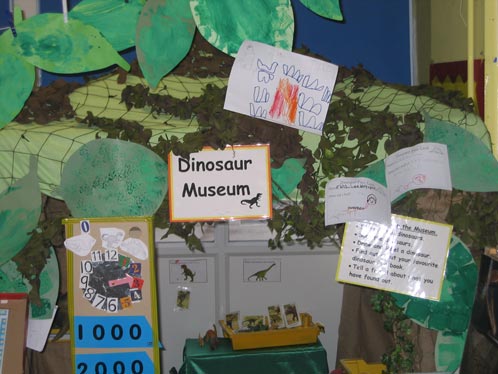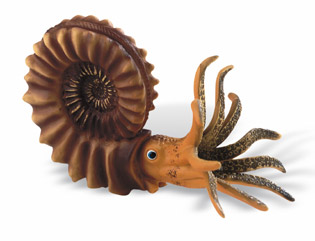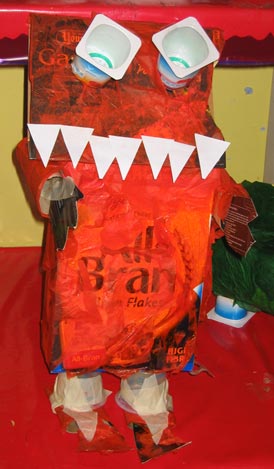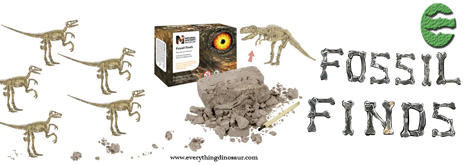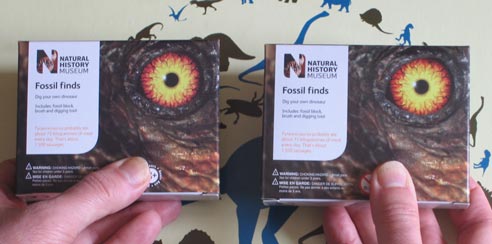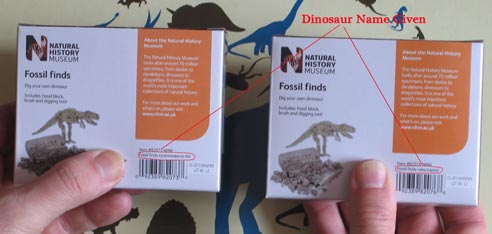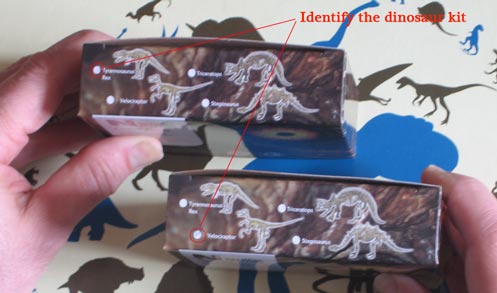Palaeontologists Fear for Safety of Red Rock Canyon Dinosaur Tracks
Recently Discovered Dinosaur Tracks May be Damaged or Stolen Before they are Studied
Scientists fear that recently discovered Early Jurassic dinosaur tracks might be damaged before they can be studied.
Located in southern Nevada, just twenty-five miles from the bustling city of Las Vegas, the Red Rock Canyon National Conservation Area provides a peaceful haven for campers and walkers amongst spectacular sandstone buttes and rock formations. This State Park covers nearly 200,000 acres and up until recently its main claims to fame include being the preferred filming location for several westerns and for sandstone petroglyphs created by native Indians.
“Jurassic Park”
However, this arid place was once home to a range of Early Jurassic dinosaurs and palaeontologists fear that the footprints these ancient creatures left behind could be either damaged or even stolen before they have been properly studied.
The Park attracts over one million visitors a year and back in 2010, three hikers reported finding dinosaur tracks whilst out trekking in the Park. At first these reports were dismissed, but a scientific investigation confirmed the trace fossil find and the announcement of the discovery was made public in the autumn of 2011.
Dinosaur Tracks
As many as ten locations within Red Rock Canyon have been identified as having preserved prehistoric tracks, five of these sites represent the footprints made by a small, bipedal dinosaur, these prints, once made in soft, wet sand are now preserved in the location’s famous sandstone deposits.
Pictures show a set of three-toed dinosaur prints preserved in the sandstone rock of the Park. The picture has been taken as if the dinosaur which made these tracks was walking towards the camera. The species is not known, but it is presumed to have been around two to three metres in length and probably carnivorous.
Early Jurassic Prints
At this time in the Early Jurassic, there was a significant radiation of different types of dinosaur and a number of new types of dinosaur evolved. Palaeontologists and the National Park’s staff are keen to protect these trace fossils, they hope to keep most of the locations secret, at least until they have been mapped, recorded and properly studied. However, with a million visitors a year to contend with, the threat of damage to the delicate prints or even theft is always on their minds.
In the neighbouring stage of Utah, Everything Dinosaur team members recently reported on the theft of a dinosaur footprint from near the town of Moab. The thief has subsequently been caught but the fossil has yet to be found. A trail date has been set for July 7th.
To read more about this incident of fossil theft: Dinosaur Footprint Stolen in Utah.
Commenting on just how fragile these ancient tracks can be, University of Nevada (Las Vegas), palaeontologist Josh Bonde stated:
“Even well-intentioned folks going out to take a look can harm the site by walking on or nearby the tracks. The formation the tracks are preserved in is not a very rigid rock and it is notorious for easily falling apart.”
Studying the Tracks
The initial 2010 discovery, once confirmed, triggered a number of similar finds in the Park. Bureau of Land Management officials would prefer visitors not to go out deliberately looking for more signs of dinosaurs having walked this way. Most of the known prints are not on designated trails and some of them are in more remote and unsafe locations.
A spokes person for the Bureau explained:
“We really want visitors to stay on designated trails” to minimise damage to all of the Park’s sensitive natural and cultural resources.”
Picture show a close up of a single dinosaur footprint. Two of the three toes that this little dinosaur walked on can clearly be made out. Such fossil finds are extremely significant and team members at Everything Dinosaur have been studying a set of similar tracks found in southern Utah, near the town of St George.
To read more about the St George trace fossils: Important Dinosaur Trace Fossil Discovery in Utah.
University of Nevada Leading the Research
The University of Nevada (Las Vegas) was recently awarded a $25,000 USD (£14,800 GBP), by the Bureau of Land Management to study the fossilised tracks in the Red Rock Canyon region. High resolution cameras will be used to photograph the prints and even LiDAR (light detection and range), a three-dimensional laser mapping system has been proposed. LiDAR would record the prints in very fine detail without causing any damage to the prints themselves. It is likely that the study will take more than twelve months to complete.
Staff at the Red Rock Canyon State Park, are hopeful that once completed this study could form the basis of a permanent display located in the Park’s visitor centre.
However, there is the ever-present risk of theft and staff have urged visitors to be on the look out for any suspicious activity. With high prices being paid for dinosaur fossils at auction, there has been a number of thefts reported in recent years. A spokesperson from Everything Dinosaur added:
“As the tracks are preserved in coarse grained sandstone, any attempts to lift the prints by untrained individuals would most probably result in the prints being damaged to such an extent that they would have no commercial value. There are very strict laws in the United States concerning damage to or theft of such precious artefacts. Any one caught committing such an act of wanton vandalism can expect to face very severe penalties.”
The Bureau of Land Management requests that anyone who finds what they believe could be dinosaur tracks or other fossils in the Park, calls 702-515-5000 and reports their discovery. They advise taking careful note of the location and photographing the finds. The Bureau also is quick to remind visitors to the Park that it is illegal to dig up or collect fossils on public land without a permit.
It is likely that more dinosaur tracks await discovery in the Lower Jurassic sandstone, known as Aztec sandstone, that outcrops this part of the western United States. Hikers and other tourists can play their part by looking out for such fossils but are reminded to report their finds and to not to attempt to dig or in anyway remove the fossils.
Visit Everything Dinosaur’s website: Everything Dinosaur.



